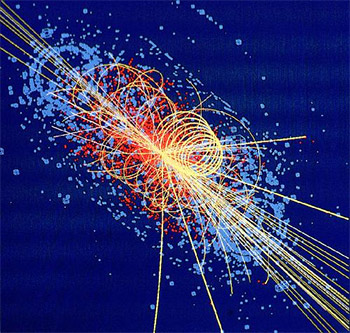Physicists from the "Permilab" research laboratory in the USA observed subatomic particle collisions for the first time

In a new series of experiments carried out at the "Tewtron" - the particle accelerator with the highest energy level in the world - physicists from the "Permilab" research laboratory in the USA observed subatomic particle collisions for the first time.
This, as part of ongoing efforts to locate an elusive but important subatomic particle, known as the Higgs. This particle contributes its mass to other particles. Possible clues about the Higgs boson were obtained last year, when researchers performed a particle collision experiment at the electron-positron accelerator. The experiment was carried out at the center of the International Scientific Organization in Geneva, shortly before it was closed.
Similar to an electron-positron accelerator, the twetron captures subatomic particles, protons and antiprotons, by means of beams, and shoots them in opposite directions in a circular channel. After the beams generate enough energy, they collide head-on in a tiny but intense explosion, centered on two giant detectors. The detectors examine the products of the collision.
This is the first series of experiments carried out in the twetron since 1997. In the meantime, a new particle accelerator was built, which was nicknamed the "main injector", in order to feed the protons and antiprotons into the twetron, where their final acceleration process is carried out.
According to researchers, the series of new experiments has the potential to reveal various physical findings, including:
* Evidence for a theoretical model that claims perfect symmetry between ions and sub-atoms, which unites all the elements in nature as building blocks.
* Examining hypotheses for the existence of additional dimensions in the universe.
* A better understanding of the quark - an elementary particle discovered at "Permilab" in 1995.
